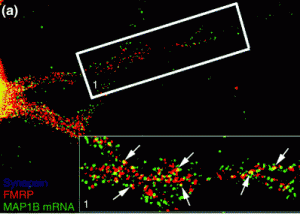An international team led by Emory scientists has gained insight into the pathological mechanisms behind two devastating neurodegenerative diseases. The scientists compared the most common inherited form of amyotrophic lateral sclerosis and frontotemporal dementia (ALS/FTD) with a rarer disease called spinocerebellar ataxia type 36 (SCA 36).
Both of the diseases are caused by abnormally expanded and strikingly similar DNA repeats. However, ALS progresses quickly, typically killing patients within a year or two, while the disease progression of SCA36 proceeds more slowly over the course of decades. In ALS/FTD it appears that protein products can poison cells in the nervous system. Whether similar protein products exist in SCA36 is not known.
What Zachary McEachin, PhD, and Gary Bassell, PhD, from Emory’s Department of Cell Biology, along with a team of collaborators at Emory, the Mayo Clinic in Jacksonville, Florida, and internationally from Spain and Japan, discovered have provided a new paradigm for thinking about how aberrant protein species are formed. Regardless of the disparate clinical outcomes between these diseases, this research could broaden the avenue of research toward genetically targeted treatments for such related neurodegenerative diseases.
Their study, published Tuesday in Neuron, provides a guide to types of protein that build up in brain cells in both disorders, and which should be reduced if the new mode of treatment is working in clinical trials.
“We are thinking of these diseases as genetic doppelgängers,” says McEachin, a postdoctoral fellow in Bassell’s lab. “By that, I mean they are genetically similar, but the neurodegeneration progresses differently for each disease. We can use this research to understand each of the respective disorders much better — and hopefully help patients improve their quality of life down the road with better treatments.”
An estimated 16,000 people in the United States have ALS, a progressive neurodegenerative disease that affects nerve cells in the brain and spinal cord. The most common inherited form of ALS/FTD occurs because there is an abnormally expanded repeat of six DNA “letters” stuck into a gene called c9orf72.





